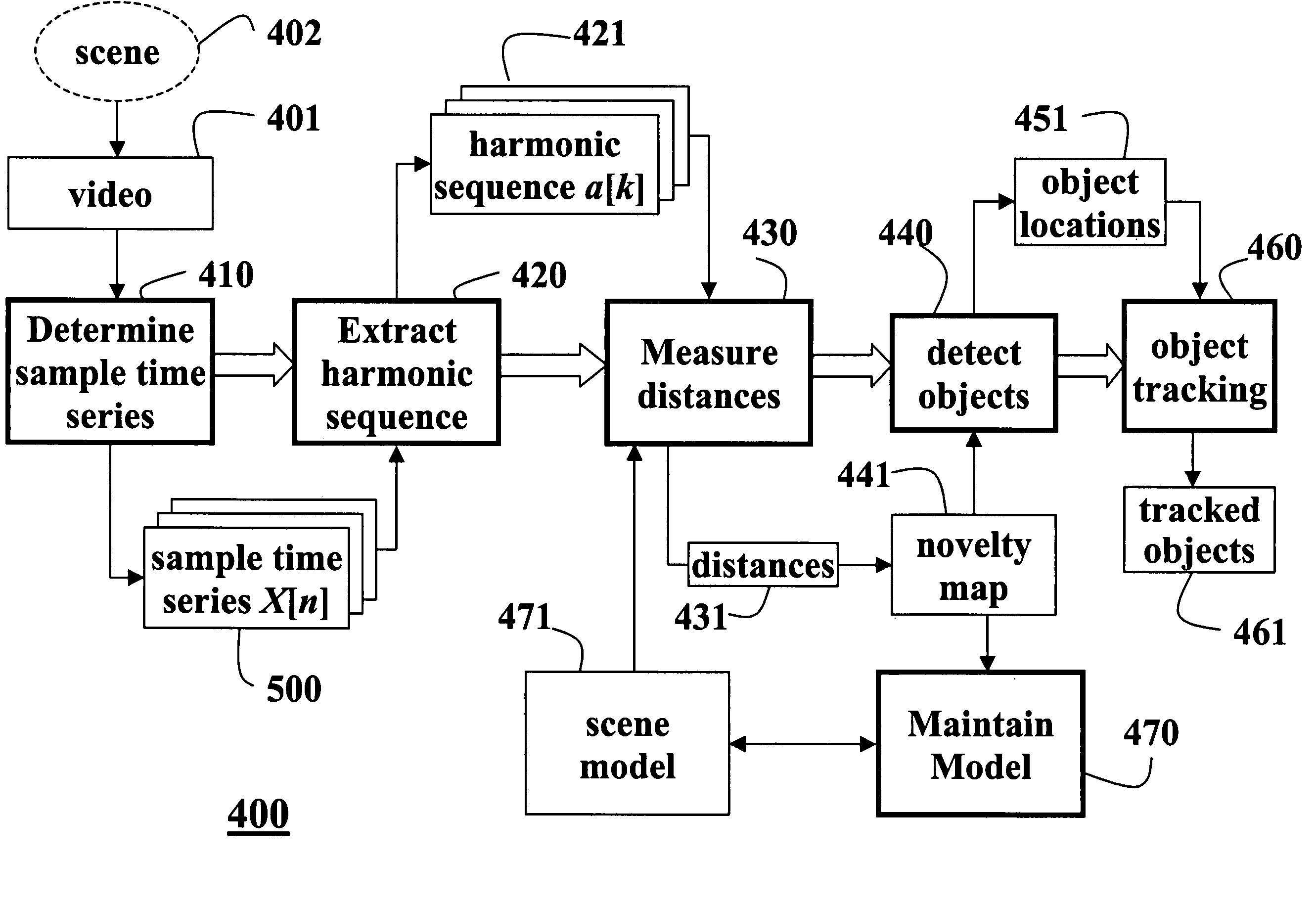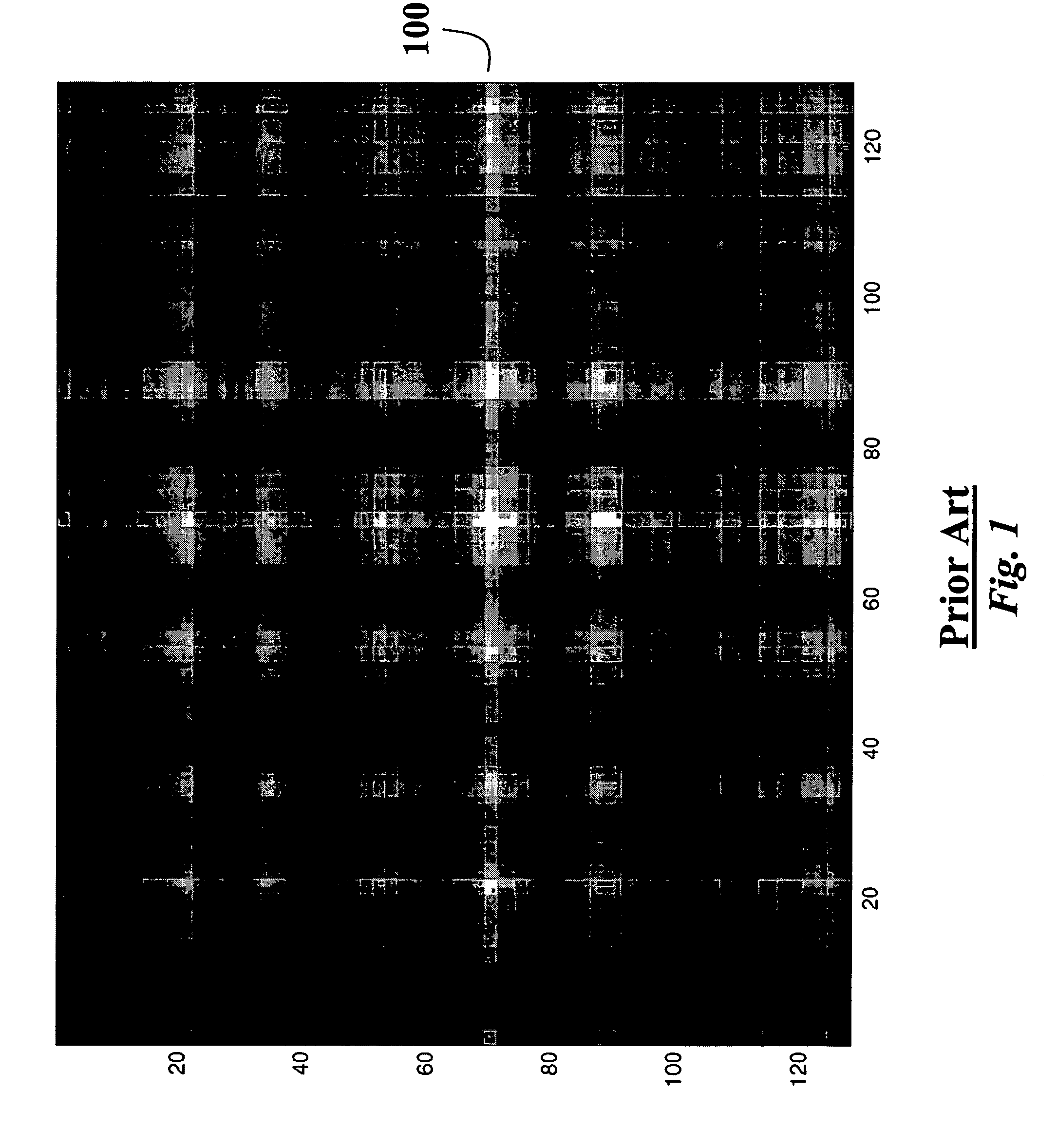Modeling scenes in videos using spectral similarity
a technology of spectral similarity and video, applied in the field of video processing, can solve the problems of significantly degrading the ability of the gmm to model arbitrary distributions, insufficient accuracy of the single gaussian model, and inability to accurately model complex systems
- Summary
- Abstract
- Description
- Claims
- Application Information
AI Technical Summary
Benefits of technology
Problems solved by technology
Method used
Image
Examples
Embodiment Construction
[0052]Temporal Sequences
[0053]FIG. 4 shows a method 400 according to our invention for modeling a scene 402 in a video 401. For each pixel in a sequence of frames of the video 401, we determine 410 a sample time series X[n]500 of the intensities of the pixel. Each time series 500 represents the dynamics of the corresponding pixel in the video over time.
[0054]FIG. 5 shows an example series 500 for one pixel over about two hundred frames. The time series X[n]500 are used to maintain 470 a model 471 of the scene.
[0055]Harmonic Series Extraction
[0056]We extract 420 a harmonic series a[k]421 from each time series 500 using a discrete Fourier transform, as described below, such that:
[0057]X[t]=∑k=0N-1a[k]ⅇⅈ2πkt / N,
where N is a size of a sliding window, k is the number of samples in the window, i is the square root of −1, and t is time.
[0058]We use only the magnitudes ∥a[k]∥ of the Fourier coefficients in the harmonic series 421. We assume that the harmonic series are an estimate ...
PUM
 Login to View More
Login to View More Abstract
Description
Claims
Application Information
 Login to View More
Login to View More - R&D
- Intellectual Property
- Life Sciences
- Materials
- Tech Scout
- Unparalleled Data Quality
- Higher Quality Content
- 60% Fewer Hallucinations
Browse by: Latest US Patents, China's latest patents, Technical Efficacy Thesaurus, Application Domain, Technology Topic, Popular Technical Reports.
© 2025 PatSnap. All rights reserved.Legal|Privacy policy|Modern Slavery Act Transparency Statement|Sitemap|About US| Contact US: help@patsnap.com



